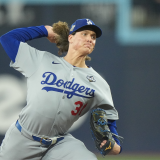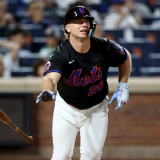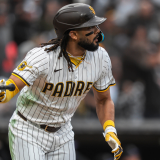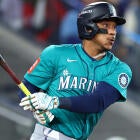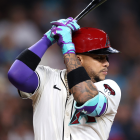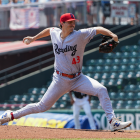MLB trends: Trevor Rogers a bright spot for O's, Bryan Woo's historic streak, Rockies nearing futility record
Let's check in on the latest trends around the league
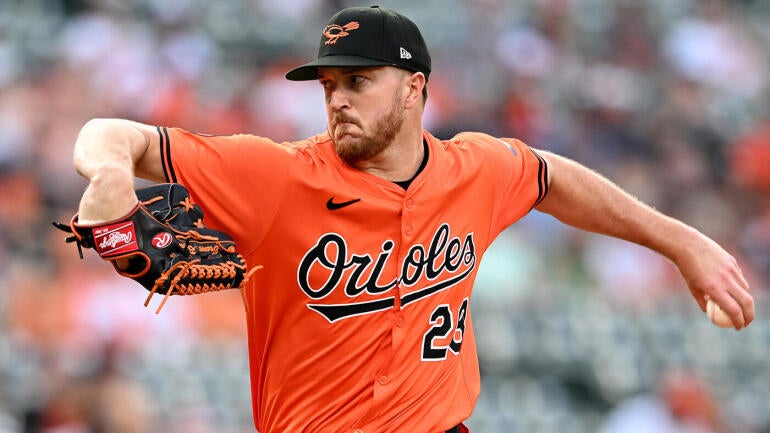
The trade deadline has come and gone and the dog days of summer have arrived. Fewer than six weeks remain in the 2025 MLB regular season. Pretty soon the various postseason and awards races will really heat up, and very meaningful games will be played every night. Here are three trends worth keeping an eye on as baseball heads into the stretch drive.
Rogers a bright spot for O's
We can't sugarcoat it: This has been a massively disappointing season for the Orioles, who have hovered around 10 games under .500 since firing manager Brandon Hyde in May. Instead of contending for a World Series, the O's are trying to finish the season on a positive note and maybe get to 81 wins by the end of September. What a letdown.
There is one bright spot for the Orioles, though. Lefty Trevor Rogers, who came over at last year's trade deadline, has revived his career and pitched like a legitimate ace the last few weeks. He struck out seven in seven innings of one-run ball against the Red Sox on Monday night. It was his fifth straight start of at least six innings and no more than one run allowed.
"Nobody knew this was going to come," interim manager Tony Mansolino admitted following Monday's game (via MLB.com). "What he's doing right now is ace-type."
Rogers, who is still only 27, opened the season on the injured list with a knee issue. He returned to the mound in late April, made one big-league spot start in May, and was in Triple-A as recently as June 17. Rogers was called up for good on June 18, and, since that date, he is second among all pitchers with 2.5 WAR. Only Cristopher Sánchez (3.1 WAR) has been better.
Things went so poorly after the trade last year (7.11 ERA in four starts) that the O's sent Rogers to Triple-A in August, where he wasn't much better (5.65 ERA in five starts). With Kyle Stowers blossoming into an All-Star this year, the trade looked like a colossal stinker for the Orioles as recently as June. There are three main reasons Rogers has resurrected his career this season:
1. His velocity has returned. Rogers was never a hard-thrower, though his velocity dipped from the 93-94 mph range earlier in his career into the 90-92 range last year. This year, his fastball is back to 92.9 mph, on average, and he's hit 96 mph for the first time since 2023. Velocity isn't everything, but it is something, and Rogers has more of it now.
2. He tweaked his approach. Specifically, Rogers is throwing more sinkers and fewer four-seam fastballs to righties, and more four-seamers and fewer sinkers to lefties. He was a four-seamer only until 2023. That's when he first added the sinker, and this year is the first time Rogers has used the sinker as his primary fastball against hitters on either side of the plate.
3. He added a sweeper. It is not a heavily used pitch for him; Rogers throws it only 7% of the time, but he does throw the sweeper to both righties and lefties. It's a new look and something to complement his four-seamer, sinker, changeup, and traditional slider. The sweeper has over a 40% whiff rate, which is excellent. Perhaps Rogers should use it more than 7%?
At some point, Rogers will get whacked with the home run rate regression stick. His 0.24 HR/9 is unsustainably low. No pitcher does that over a full season. Otherwise, there are tangible reasons to believe in this year's improvement. His velocity has bounced back, he added a new pitch, and he changed his pitch mix. The underlying numbers are quite strong (3.07 xERA).
The Orioles needed a win this season, badly, and Rogers is that win. The trade looked like a dud not even three months ago, but Rogers is back to being an effective big leaguer for the first time since his NL Rookie of the Year runner-up season in 2021. The O's will have him next year as an arbitration-eligible player, too. That's one positive they can carry over into 2026.
Woo's historic run
Perhaps no player better exemplifies modern pitcher development than Mariners righty Bryan Woo. Woo, 25, had a 6.36 ERA and walked four batters per nine innings during his three years at Cal Poly. In three seasons as a big leaguer, he has a 3.27 ERA and has walked only 1.8 batters per nine innings. The Mariners took Woo in the sixth round in 2021 and turned him into a stud.
This past Saturday against the Mets, Woo struck out eight and allowed one run in six innings, though it was a bit of a grind. New York forced him to throw 101 pitches in those six innings, or 3.88 pitches per batter faced. That is well above his 3.64 pitches per batter season average, a top 10 mark among qualified pitchers. The league average is 3.86 pitches per plate appearance.
"There were a couple of long ABs," Woo said after Saturday's game (via MLB.com). "You can live with getting singled to death, so long as I'm making good pitches and they are putting good swings on good pitches, it's a tip of your cap situation."
Saturday was Woo's 24th start of the season and, incredibly, he has gone at least six innings and walked no more than two batters in all 24 starts. He's the first pitcher in history with 24 straight such starts to begin a season, and only the fourth with 24 straight such starts in a single season at any point in the year. Look at these names:
| Starts of 6 IP and 2 BB or fewer | Streak started | Streak ended | |
|---|---|---|---|
Bryan Woo, Mariners | 24 and counting | March 30, 2025 | ??? |
Christy Mathewson, New York Giants | 25 | July 6, 1908 | Oct. 8, 1908 |
Cy Young, Boston Americans | 30 | April 14, 1905 | Sept. 23, 1905 |
Cy Young, Boston Americans | 26 | April 30, 1901 | Aug. 10, 1901 |
The last pitcher with 24 consecutive starts of at least six innings and no more than two walks allowed spanning multiple seasons is Hall of Famer Roy Halladay, who did it in 26 straight starts from 2010-11. Before Halladay, it was Curt Schilling, spanning 2000-01, also with 26 straight starts. Before Schilling, you have to go back to Oil Can Boyd from 1985-86.
Woo's streak is impressive even when you strip away the walks component. Going six innings is an accomplishment these days. The last pitcher to begin a season with 24 straight starts of six or more innings was Zack Greinke, who went at least six innings in all 32 starts during his 2015 NL Cy Young runner-up season with the Dodgers. Woo is one of only seven pitchers this century to go at least six innings in 24 consecutive starts at any point in the season.
An elite four-seam fastball (elite moreso for "rise" than velocity), a sinker that reliably produces ground balls early in the count, a bat-missing slider, and the fearlessness to pound the zone make Woo a pitch-efficiency monster and six-inning-start machine. I'm not sure even the Mariners saw this coming when Woo was struggling to hold down a rotation spot at Cal Poly. He's been incredible.
Rockies approaching run differential history
Believe it or not, the Rockies are on a hot streak. They've won six of their last eight games, even with Tuesday's loss to the Dodgers. Since bottoming out at 9-50, the Rockies are 28-39, which is a 94-loss pace. They've gone from historically awful in April and May to merely "regular" bad since the start of June.
Colorado has been outscored by a staggering 333 runs this season, or by 2.64 runs per game, on average.. That minus-333 run differential is more than double the next worst team (Nationals at minus-158) and comfortably worse than last year's White Sox team, which lost a modern record 121 games with a minus-302 run differential.
The 1899 Cleveland Spiders went 20-134 and had the worst run differential in history at minus-723. They were not a normal bad team. Their owner, the Robison family, traded their best players to the St. Louis Browns, the other team they owned, because it would boost attendance and make them the most money. Soon thereafter, MLB prohibited owners from owning multiple franchises.
No team will ever approach the futility of those 1899 Spiders. The 2025 Rockies are approaching the worst run differential of baseball's Modern Era, though. Here are the worst run differentials since the Modern Era began in 1901:
| Record | Run differential | |
|---|---|---|
1932 Red Sox | 43-111 | -345 |
1915 Athletics | 43-109 | -344 |
2023 Athletics | 50-112 | -339 |
2003 Tigers | 43-119 | -337 |
2019 Tigers | 47-114 | -333 |
It's definitely not a great look for the league that three of the five worst run differentials of the Modern Era have come within the last 22 years, including two of the five worst in the last six years. To pass those 1932 Red Sox, the Rockies need to be outscored by at least 12 runs in their final 36 games, which is eminently doable.
It should be noted that Colorado's run differential issues transcend Coors Field. At home, the Rockies have a minus-184 run differential in 64 games, so that's 2.88 runs per game. On the road, it's a minus-149 run differential in 62 games, or 2.40 runs per game. Coors Field is inflating the club's run differential but not that much. The Rockies get outscored by a ton everywhere.
The Rockies seemed destined to lose 125-plus games earlier this year, but their recent hot streak has them on pace for "only" 116 losses, which is bad but not particularly notable. They only need to go 6-30 in their final 36 games to avoid matching the 121 losses of last year's White Sox. Avoiding the Modern Era run differential record will be a tall order, though. These Rockies get outscored like few teams ever.






